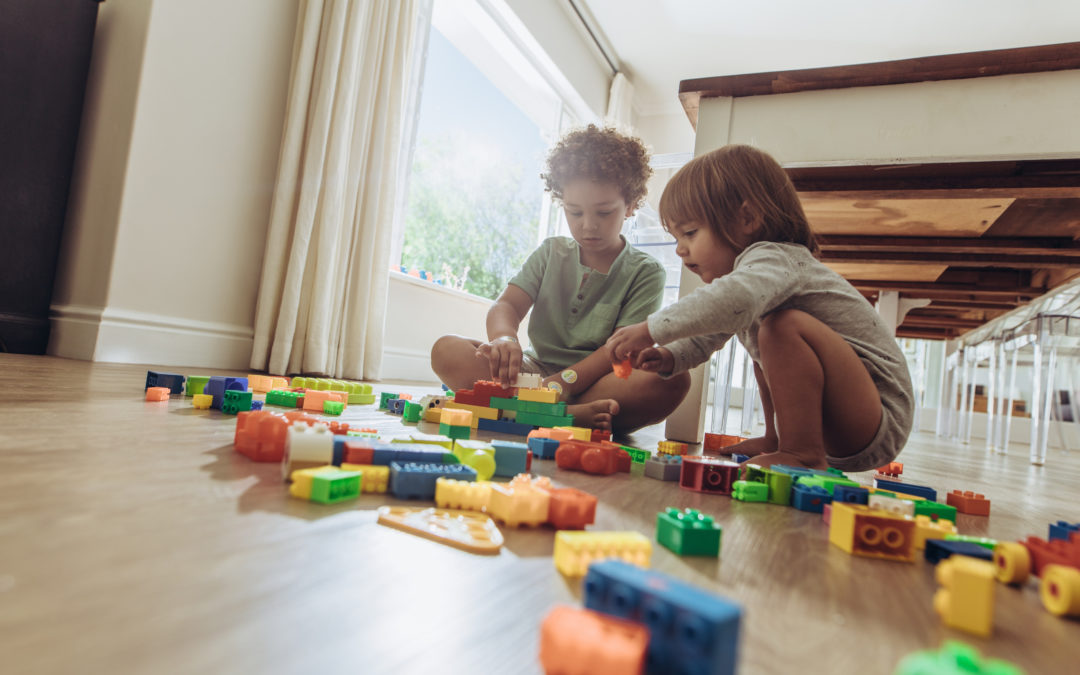Many of us find our regular schedules brought to a halt as we combine our efforts to slow down the spread of COVID-19 coronavirus by following Safer-at-Home emergency order. As a result, we are now tasked with creating the “new normal” for ourselves and for our kids. Much of what the children are so used to – classes, libraries, zoos, park outings, play dates and visits with family members – is currently out of reach, and few things can provide a comparable substitute. Children (and, likely adults) will inevitably miss these things, and we have to be ready to help them experience and process feelings of frustration about this loss. But in trying to help kids fight bouts of cabin fever during this challenging period, we can’t underestimate a well of educational and fun possibilities that is the familiar environment of the home. Learning, creating, and exploring under the care and in the company of the child’s favorite adults can have immense developmental value, even (especially!) if its disguised as fun interactive play.
LET’S MOVE!
Obstacle Course
To keep the child moving (and laughing!) you can create an impressive obstacle course that includes things to jump over, things to roll onto, and things to crawl under. Stable pieces of furniture, sofa cushions, tumbling mats, blankets and sheets, empty cardboard boxes and large plush toys would be your most reliable building supplies. You might need to jump, roll, and tumble a couple of times yourself to demonstrate the nuances of this process. Little kids are likely to grasp the concept fairly quickly; after all, most of the world looks like an obstacle course from the perspective of a toddler! It may be worth browsing Pinterest for many creative takes on homemade obstacle course designs.
Traffic, the Fun Kind
With the help of masking tape, create your own roads on the floor or the carpet. These roads can occupy a small section of a room or traverse your entire home. You can use toy cars and trucks to utilize this new urban development, or you can become cars and trucks yourselves, making your way (on four wheels, of course) from one room to the other.
Scavenger Hunt
You can hide anything, from differently shaped blocks to favorite toys around the house, draw a simple map key, and guide your little one on the journey of discovery. It might be helpful to stick with a single theme: colors, shapes, animal or insect toys, or anything that your child might be particularly interested in. Depending on the items you choose, this could be a lesson in directionality, classification, or addition, all while being combined with the fun of an Easter egg hunt. The experience of it can be the reward in itself, or you might place a valuable prize (a new toy or a treat) at the final destination. This activity can easily be adjusted to the developmental level of your child. Here are some great suggestions on specific directions and themes for the game: https://entertainyourtoddler.com/indoor-scavenger-hunt-ideas/
MAKING A MESS
Shaving Cream with a Greater Purpose
One of our favorite sensory play activities at ECDA involves shaving cream. Not only because it makes the children smell like college graduates going to their first job interview (although that can be considered a bonus by some), but because it provides a pleasant and safe sensory experience and offers many creative possibilities. Most importantly, it can become the messiest of messes (to benefit the little one) and can be just as easily cleaned up (to benefit of the adult). As simple a recipe as a tray filled with shaving cream with a few plastic toys thrown in can unleash the power of your child’s imagination. Shaving cream mixed with food dye is a great teaching tool for color theory, as we mix blue and yellow to come up with green, red and yellow for orange, etc. Same mixture also makes for a lovely rainbow, or can be used to make impressive marbling patterns. But the fun doesn’t end there! We can use the marbling pattern to dye Easter eggs in unique and creative way. Mixing shaving cream with baking soda and fluffing up the mixture with a fork can help us make pretty convincing snow. We can also mix shaving cream with school glue and flour to create puffy paint. If you can think of any other creative uses for shaving cream, please share with us!
All Our Marbles
All you and your little one need to create a painterly tribute to Jackson Pollock are a few marbles, some tempera paint and a piece of paper on a tray. Rolling the marbles in the paint and then letting them loose on the surface of the paper by rotating the tray every which way will create a unique and beautiful pattern. This is one of the most popular projects at ECDA, which means that kids and teachers alike enjoy it very much.
Lego Day
What if you, the parent, were allowed to make a big mess, just this one time? Dumping all the Lego pieces you own onto a table or a rug and spending the entire day truly playing together before it all has to go back into the box, might be fun and memorable for all the kids in the household. Even the grown-up ones…
Kitchen Takeover
While many kids we work with at ECDA enjoy playing with toy food in a kid-sized kitchen, nothing compares to the real thing. If you are able to, free up a lower cabinet and fill it with your toddler’s personal collection of inexpensive mixing spoons, bowls, colanders, pots, and pans, or any other kitchenware you are willing to spare. Let you child play with the utensils first, before you begin to demonstrate their “appropriate” use. Then, it’s time to try some mixing, measuring, and sorting. Manage your expectations: this is the earliest introduction to the complex world of cooking and baking, one that will take many years to perfect. Don’t be afraid to let your child be an active participant in meal preparation, be it ripping lettuce, washing vegetables, pouring dry items, or sorting silverware. Let your little one help, even if that requires extra patience and extra cleaning. Your kitchen is not only the ultimate lab for creative experimentation, it is also the fertile ground for collaboration and bonding.


Recent Comments